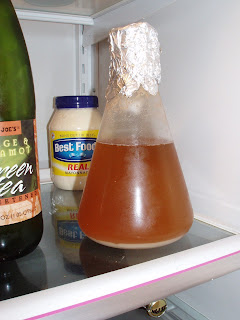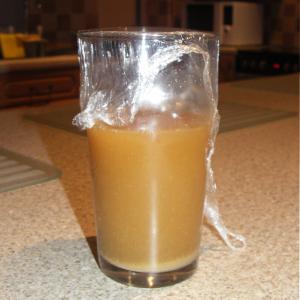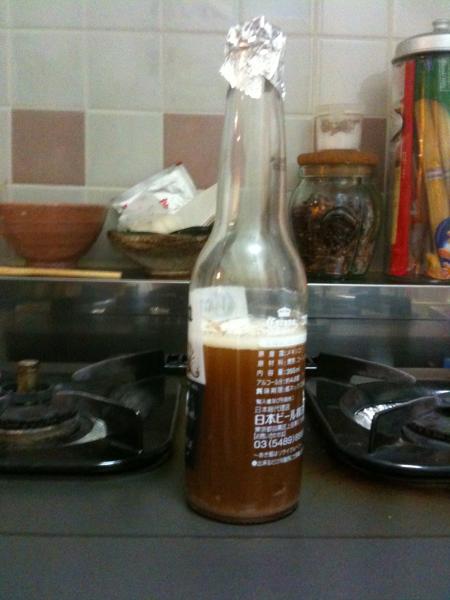Yokohama is the birthplace of beer in Japan. A small brewery opened in 1870 and later was acquired by a larger distributor that eventually evolved into Kirin. This is also one of the epi-centers of the Japanese craft beer boom. Yokohama ain't just tires, my friend
Yokohama was a small fishing village up to the end of the feudal Edo period, when Japan held a policy of national seclusion, having little contact with foreigners.[3] A major turning point in Japanese history happened in 185354, when Commodore Matthew Perry arrived just south of Yokohama with a fleet of American warships, demanding that Japan open several ports for commerce, and the Tokugawa shogunate agreed by signing the Treaty of Peace and Amity.[4]
It was initially agreed that one of the ports to be opened to foreign ships would be the bustling town of Kanagawa-juku (in what is now Kanagawa Ward) on the Tōkaidō, a strategic highway that linked Edo to Kyoto and Osaka. However, the Tokugawa shogunate decided that Kanagawa-juku was too close to the Tōkaidō for comfort, and port facilities were instead built across the inlet in the sleepy fishing village of Yokohama. The Port of Yokohama was opened on 2 June 1859.
Landing of Commodore Perry, officers, and men of the squadron to meet the Imperial commissioners at Yokohama 14 July 1853. Lithograph by Sarony & Co., 1855, after Wilhelm Heine
Yokohama quickly became the base of foreign trade in Japan. Japan's first English language newspaper, the Japan Herald, was first published there in 1861. Foreigners occupied a district of the city called "Kannai" (関内, "inside the barrier"), which was surrounded by a moat, and were protected by their extraterritorial status both within and outside the moat. Many individuals crossed the moat, causing a number of problems. The Namamugi Incident, one of the events that preceded the downfall of the shogunate, took place in what is now Tsurumi Ward in 1862; Ernest Satow described it in A Diplomat in Japan.
After the Meiji Restoration of 1868, the port was developed for trading silk, the main trading partner being Great Britain. Many Western influences first reached Japan in Yokohama, including Japan's first daily newspaper (1870) and first gas-powered street lamps (1872). Japan's first railway was constructed in the same year to connect Yokohama to Shinagawa and Shinbashi in Tokyo. In the same year, Jules Verne set Yokohama, which he had never visited, in an episode of his widely-read Around the World in Eighty Days, capturing the atmosphere of a fast-developing, Western-oriented Japanese city.
Foreign ships in Yokohama harbor
A foreign trading house in Yokohama in 1861
In 1887, a British merchant, Samuel Cocking, built the city's first power plant. At first for his own use, this coal-burning plant became the basis for the Yokohama Cooperative Electric Light Company. The city was officially incorporated on 1 April 1889.[5] By the time the extraterritoriality of foreigner areas was abolished in 1899, Yokohama was the most international city in Japan, with foreigner areas stretching from Kannai to the Bluff area and the large Yokohama Chinatown.
The early 20th century was marked by rapid growth of industry. Entrepreneurs built factories along reclaimed land to the north of the city toward Kawasaki, which eventually grew to be the Keihin Industrial Area. The growth of Japanese industry brought affluence, and many wealthy trading families constructed sprawling residences there, while the rapid influx of population from Japan and Korea also led to the formation of Kojiki-Yato, then the largest slum in Japan.
Much of Yokohama was destroyed on 1 September 1923 by the Great Kantō earthquake. The Yokohama police reported casualties at 30,771 dead and 47,908 injured, out of a pre-earthquake population of 434,170.[6] Fuelled by rumours of rebellion and sabotage, vigilante mobs thereupon murdered many Koreans in the Kojiki-yato slum.[7] Many people believed that Koreans used black magic to cause the earthquake. Martial law was in place until 19 November. Rubble from the quake was used to reclaim land for parks, the most famous being the Yama****a Park on the waterfront which opened in 1930.
Yokohama was rebuilt, only to be destroyed again by thirty-odd U.S. air raids during World War II. An estimated seven or eight thousand people were killed in a single morning on 29 May 1945 in what is now known as the Great Yokohama Air Raid, when B-29s firebombed the city and in just one hour and nine minutes reduced 42% of it to rubble.[5]
During the Korean War, the United States Navy used Yokohama's port as a transshipment base. This ship departed Yokohama in 1951, carrying war dead home to the U.S.
During the American occupation, Yokohama was a major transshipment base for American supplies and personnel, especially during the Korean War. After the occupation, most local U.S. naval activity moved from Yokohama to an American base in nearby Yokosuka.
The city was designated by government ordinance on September 1, 1956.[citation needed]
The city's tram and trolleybus system was abolished in 1972, the same year as the opening of the first line of Yokohama Municipal Subway.
Landsat image of Yokohama
Construction of Minato Mirai 21 ("Port Future 21"), a major urban development project on reclaimed land, started in 1983. Minato Mirai 21 hosted the Yokohama Exotic Showcase in 1989, which saw the first public operation of maglev trains in Japan and the opening of Cosmo Clock 21, then the tallest Ferris wheel in the world. The 860m-long Yokohama Bay Bridge opened in the same year.
In 1993, Minato Mirai saw the opening of the Yokohama Landmark Tower, the tallest building in Japan.
The 2002 FIFA World Cup final was held in June at the International Stadium Yokohama.
In 2009, the city marked the 150th anniversary of the opening of the port and the 120th anniversary of the commencement of the City Administration. An early part in the commemoration project incorporated the Fourth Tokyo International Conference on African Development (TICAD IV) which was held in Yokohama in May 2008.
In November, 2010, Yokohama hosted the Asia-Pacific Economic Cooperation (APEC) meeting.


















































![Craft A Brew - Safale BE-256 Yeast - Fermentis - Belgian Ale Dry Yeast - For Belgian & Strong Ales - Ingredients for Home Brewing - Beer Making Supplies - [3 Pack]](https://m.media-amazon.com/images/I/51bcKEwQmWL._SL500_.jpg)










